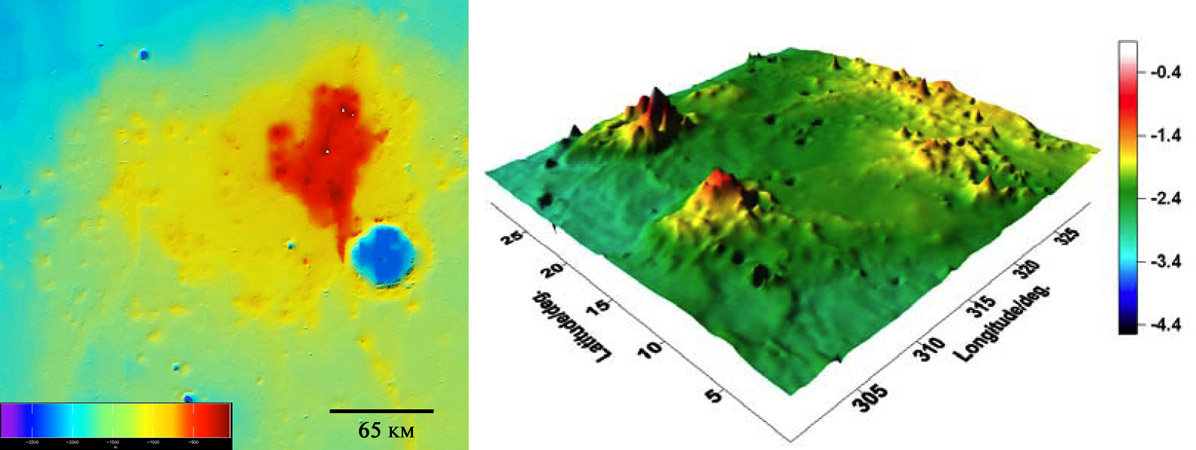August 19, 2019
Yutu
Originally published May 8, 2010

left image from LRO LOLA Image of the Week, and right one from Ping and colleagues
The Marius Hills have been recognized as a complex of small volcanic cones, domes and rilles since the 1960s. Chinese scientists have now used digital topographic data (with extreme vertical exaggeration - right) from their Chang'E-1 lunar orbiter to recognize that the entire Marius hills volcanic complex is equivalent to giant mare dome, with a high eastern section that rises significantly over the rest of the volcanic field. Scientists Ping JinSong and colleagues determined that the Marius Hills complex is ~300 km wide, up to 2 km high, and slopes at an angle of 1° to the west and 2° to the east. The higher resolution Lunar Reconnaissance altimetry data provides greater detail (left), showing quite clearly an area (red) 600-700 m higher than most of the field. The Chinese call this Marius Hills volcano Yutu, after a jade rabbit that figures in the legend of a Chinese Moon goddess Chang'E. This name has not been submitted to the International Astronomical Union group that considers lunar nomenclature, and it is not consistent with the convention of naming lunar mountains after terrestrial mountain ranges or nearby craters. The Chang'E topographic data also show the better known elevation of the Aristarchus Plateau whose eastern side is high. Ping and colleagues also consider the Plateau to be a volcano - for which there is much less evidence - and name it Guishu, after a "cherry bay" from the same legend.
Chuck Wood
Related Links
Rükl plate 29
Yesterday's LPOD: Lunarwear
Tomorrow's LPOD: Curves
COMMENTS?
Register, Log in, and join in the comments.



